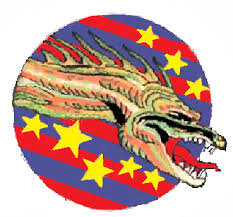 Image 1 of
Image 1 of


"DOC", 1951
“DOC”, B-29 SN 44-69972, built in Wichita, KS in 1945 and assigned to the 1st Radar Calibration Squadron in 1951 as shown. She was later adopted by the Navy for target practice, but survived and today remains one of only two B-29 Superfortresses to still grace the skies.
“DOC”, B-29 SN 44-69972, built in Wichita, KS in 1945 and assigned to the 1st Radar Calibration Squadron in 1951 as shown. She was later adopted by the Navy for target practice, but survived and today remains one of only two B-29 Superfortresses to still grace the skies.
“DOC”, B-29 SN 44-69972, built in Wichita, KS in 1945 and assigned to the 1st Radar Calibration Squadron in 1951 as shown. She was later adopted by the Navy for target practice, but survived and today remains one of only two B-29 Superfortresses to still grace the skies.
The B-29 'Superfortress' was the most advanced aircraft, let alone bomber of the war. It was fast, large, and had great range. The bombers operated from island bases that were captured at great human cost on the slow island campaign that marched across the Pacific toward the Island nation of Japan. The airplane was the first to be pressurized which allowed the crew to work and fight in a climate controlled environment which reduced work load immensely. This advancement also allowed the plane to fly at much higher altitudes and to bomb from much higher altitudes that provided some measure of safety from ground attack. It was in fact during missions to Japan that the 'Jet Stream' that we are now fully aware of was discovered. Because of the Jet stream, the bombers were forced to fly at lower altitudes to provide better accuracy.
It was a B-29 name Enola Gay, specially configured for the mission, that eventually would drop the first of two atomic weapons that would lead to the long sought victory in the Pacific.
Two B-29's are now airworthy, one named 'FIFI' was joined by a second aircraft restored in Wichita, Kansas named 'DOC'.







